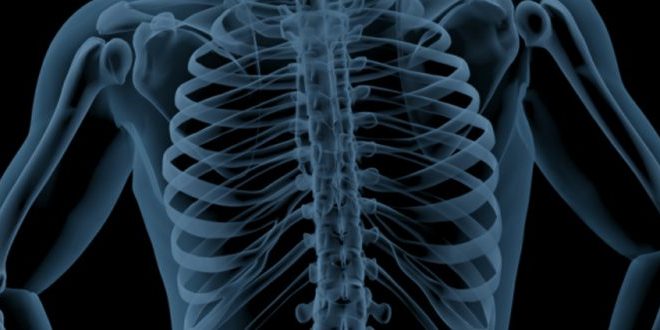Treating Soft Tissue Injuries with Myofascial Techniques
Soft tissue injuries involve muscles, tendons, ligaments, and fascia, all of which must work in harmony for full recovery. Myofascial techniques—like myofascial release, IASTM, trigger point therapy, PNF stretching, percussion, and Trigenics—target fascial restrictions and adhesions that traditional RICE approaches often miss. By restoring tissue glide, enhancing circulation, and retraining neuromuscular patterns, these methods accelerate healing, reduce pain, and improve range of motion. A personalized mix of these therapies ensures both immediate relief and long-term resilience.

When we think of injuries, we often focus on muscles, tendons, or ligaments—but soft tissue injuries involve far more than just one layer of tissue. Soft tissue refers to all the non-bony structures that support and move the body: muscles, tendons, ligaments, and fascia. Each of these tissues plays a unique role in movement, stability, and healing. And when one is injured, the entire system often compensates, leading to pain and dysfunction that can linger long after the original issue seems to have passed.
These types of injuries are incredibly common—especially among active adults, athletes, and anyone with a physically demanding job or repetitive movement pattern. Whether it’s overuse, direct trauma, poor biomechanics, or chronic postural stress, soft tissue damage can manifest in a variety of ways: sprains, strains, tendinitis, and myofascial adhesions. Unfortunately, they’re often underestimated or treated with a surface-level approach.
Conventional treatment typically includes rest, ice, compression, elevation (RICE), and possibly anti-inflammatory medications. While these methods can provide short-term relief, they don’t resolve the root dysfunction—especially when fascial restriction, scar tissue, or neuromuscular compensation are at play. This is why many people experience recurring flare-ups, chronic tightness, or a frustrating healing plateau.
What Qualifies as a Soft Tissue Injury?
Soft tissue injuries come in many forms, but they all involve damage to the body’s non-bony structures—muscles, tendons, ligaments, and fascia. These tissues are critical for movement, coordination, and joint stability, and when they’re stressed or damaged, the result is often pain, limited motion, and compensatory imbalances throughout the body.
Common Types of Soft Tissue Injuries
Strains and Sprains
- Strains involve overstretching or tearing of muscle fibers or tendons (the tissue that connects muscle to bone).
- Sprains involve overstretching or tearing of ligaments (the tissue that connects bone to bone).
These are some of the most frequent sports and activity-related injuries, ranging from mild microtears to full ruptures.
Tendinitis and Tendinosis
- Tendinitis is inflammation of a tendon due to acute overload.
- Tendinosis is the degeneration of tendon tissue from chronic overuse without proper healing.
Common examples include tennis elbow, rotator cuff issues, and Achilles problems.
Ligament Injuries
Ligament injuries—like ACL tears or ankle sprains—often occur during high-speed movements, directional changes, or trauma. These injuries may appear isolated but almost always involve surrounding muscle and fascial compensation.
Myofascial Pain Syndrome
This condition occurs when sensitive trigger points within muscles and fascia become chronically irritated. The result is referred pain, tightness, and unpredictable symptoms that traditional muscle-only treatments often miss.
Muscle Tears or Microtrauma
From minor pulls to full-thickness tears, muscle injuries disrupt the functional integrity of soft tissue. Even when healed, they often leave behind fascial adhesions or compensatory dysfunction if not properly rehabilitated.
Fascia’s Role in All Soft Tissue Injuries
Even when an injury seems limited to a muscle or tendon, fascia is always involved. Fascia encases and connects all soft tissue, meaning it reacts to injury by stiffening, binding, or forming adhesions around the damaged area. This can:
- Restrict blood flow and lymphatic drainage
- Limit the ability of tissues to glide and contract normally
- Contribute to chronic inflammation or pain
- Force nearby muscles or joints to compensate, increasing the risk of further injury
Myofascial Techniques Used in Treatment
At Mountain Movement Chiropractic & Natural Health, we use a range of evidence-informed myofascial techniques to help patients recover from soft tissue injuries efficiently and completely. These techniques go far beyond surface-level massage—they’re designed to restore tissue integrity, improve movement mechanics, and resolve pain by targeting the fascia, muscle, and nervous system together.
Myofascial Release Therapy (MRT)
- Purpose: To restore fascial glide and elasticity
- MRT involves applying sustained, gentle pressure to restricted fascial areas to release adhesions and allow the tissues to move independently again.
- Especially helpful in areas where motion feels “stuck” or chronically tight after injury.
IASTM (Instrument-Assisted Soft Tissue Mobilization)
- Purpose: To break up scar tissue and densified fascia
- Using specialized tools, IASTM provides a controlled microtrauma to stimulate healing, reorganize collagen, and free up bound tissue layers.
- Ideal for post-surgical scars, tendinosis, and chronic overuse injuries like plantar fasciitis or tennis elbow.
Trigger Point Therapy
- Purpose: To deactivate localized pain centers and reset muscle firing
- Trigger points—tight knots within muscle or fascia—can cause referred pain and inhibit proper movement. This technique uses pressure to release those points and restore balance.
- Beneficial for myofascial pain syndrome, headaches, neck/shoulder pain, and sports-related tension.
PNF Stretching (Proprioceptive Neuromuscular Facilitation)
- Purpose: To reset the nervous system and improve range of motion
- By combining passive stretching with isometric muscle engagement, PNF helps the body override protective tension and regain functional flexibility.
- Great for joint mobility after injury and restoring coordination in post-acute recovery stages.
Percussion Therapy
- Purpose: To boost circulation and reduce surface-level tension
- High-frequency vibration helps increase blood flow, reduce soreness, and loosen superficial fascial layers.
- Often used in conjunction with other techniques to prep tissue or support post-treatment recovery.
Trigenics
- Purpose: To reprogram faulty neuromuscular patterns
- Trigenics blends manual therapy, resistance-based movement, and neurological feedback to correct imbalances at the brain-body level.
- Highly effective for patients with movement dysfunction that hasn’t responded to traditional rehab.
How We Choose the Right Techniques
No two soft tissue injuries are the same—and neither are their solutions. At Mountain Movement, we assess:
- The nature and severity of the injury
- The stage of healing (acute, subacute, or chronic)
- Existing compensations or dysfunctions in posture and movement
- The patient’s activity level, lifestyle, and goals
From there, we develop a personalized treatment plan using the best combination of myofascial techniques to restore function, reduce pain, and support long-term tissue health. Whether you’re recovering from a recent strain or dealing with an old injury that never quite healed right, this approach gets to the root—and helps your body rebuild stronger.
The Healing Benefits of Myofascial Techniques
Accelerated Tissue Repair
One of the biggest advantages of myofascial work is its ability to stimulate healing from the inside out:
- Enhanced blood and lymphatic flow delivers oxygen and nutrients to damaged tissues while flushing out waste products and inflammatory byproducts. This circulation boost helps injured areas recover faster and more efficiently.
- Fibroblast activation and collagen remodeling are also key. Myofascial techniques stimulate the cells responsible for producing and organizing new collagen—the scaffolding for tissue repair. This results in stronger, more functional healing, rather than disorganized scar tissue.
Pain Reduction
Myofascial therapy is highly effective at relieving pain—not just by masking symptoms, but by resolving the underlying cause:
- Decreases pressure on nerves caused by restricted fascia or muscle guarding. As tissue tension normalizes, compressed nerves are freed, reducing sharp, radiating, or burning sensations.
- Calms the central nervous system, shifting the body from a state of pain vigilance (sympathetic dominance) to one of recovery and regulation (parasympathetic activity). This downregulates pain signals and encourages full-body relaxation.
Improved Range of Motion and Function
Tight fascia can act like a straitjacket around muscles and joints. Releasing those restrictions is essential to restoring movement:
- Releases surrounding tightness that often develops around an injury site as the body attempts to protect it.
- Encourages early movement in a controlled way, which is key for preventing stiffness and regaining strength, coordination, and confidence post-injury.
Prevention of Scar Tissue Adhesion
One of the most overlooked benefits of myofascial techniques is their role in scar tissue management:
- Keeps tissue layers mobile by breaking up early adhesions and encouraging healthy glide between muscles, fascia, and skin.
- Reduces the risk of long-term stiffness or reinjury, which often stems from scar tissue that restricts full range of motion and disrupts normal movement patterns.
Healing the Hidden Layers
Most soft tissue injuries aren’t just about the muscle or joint—they’re about what’s happening around and within the tissue. Fascia, the body’s connective tissue network, often holds onto trauma, restriction, and tension long after the initial injury has faded. If left unaddressed, these fascial layers can quietly block full recovery, limit range of motion, and keep pain lingering beneath the surface.
Myofascial techniques offer a deeper level of care. They don’t just manage symptoms—they resolve the underlying dysfunction. From restoring mobility and reducing inflammation to retraining neuromuscular pathways, this approach supports both immediate relief and long-term resilience. The key is treating the entire system—not just the injury.
At Mountain Movement Chiropractic & Natural Health, we focus on healing from the inside out. The difference is in the depth: when fascia moves well, the whole body performs and heals better.
📞 Call now: (864) 448-2073
📍 Visit us at: 1901 Laurens Road, Suite E, Greenville, SC 29607
🌐 Book online or learn more: https://mountainmovementcenter.com
🗓️ Schedule a full-body movement + soft tissue assessment to uncover how fascial restrictions may be limiting your healing or performance.
📲 Follow us for educational tips, recovery insights, and patient success stories:

We Treat the
Toughest Cases
We'd love to talk with you about yours. Ask us anything and we will get back to you with a detailed answer about your case.

.jpg)




